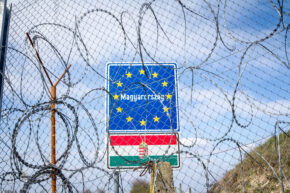


Marcello Maneri
Research Affiliate
Forum Internazionale ed Europeo di Ricerche sull’Immigrazione (FIERI)

Andrea Pogliano
Research Affiliate
Forum Internazionale ed Europeo di Ricerche sull’Immigrazione (FIERI)

Blanca Garcés-Mascareñas
Senior Research Fellow & BRIDGES Scientific Coordinator


Berta Güell
Researcher & BRIDGES Assistant Coordinator
State of the Art
From its initial emergence in social science and humanities literature in the 1960s and 1970s, literature on narratives has now burgeoned, becoming one of the most influential approaches to studying communication and behaviour in contemporary societies. The definition of the term has been sharpened, and studies have yielded a range of interesting hypotheses and findings on key dimensions of narratives: their human, social and political functions; the conditions and features that make them persuasive and pervasive; and some of the social and political conditions which are changing the form, content and diffusion of narratives. Literature dealing more specifically with narratives on migration (MiNa) has both applied and further developed these concepts, theories and empirical findings – in many cases operating at the frontiers of theory-building. Indeed, migration has become a key site for the study of narratives, given its salience in media and political debate, and the social tendencies and political incentives to construct migration in particular ways.
This Working Paper provides an overview of social science literature on narratives, with a particular focus on narratives on migration (MiNa). The paper starts by tracing the emergence of the concept of narratives in a range of social sciences (sociology, anthropology, political science, psychology and media studies), and then outlines a working definition of the concept for use in the BRIDGES project. It then maps key literature about the emergence and sources of narratives; their psychological, social and political functions; and the factors influencing their spread and prevalence. It goes on to explore how the concept has been applied to understand the dynamics of mobility, displacement, integration, public attitudes and political mobilisation in migration studies. And it examines some of the key themes of the literature in relation to gender, a key dimension of the BRIDGES project, and then sets out a number of trends that might be expected to shape the content and diffusion of narratives.
While this review focuses on the definitions, functions, diffusion and impact of narratives more generally, the authors are especially interested in contributions that apply narrative theories and concepts to migration. Throughout the analysis, they provide examples of such applications in the literature. However, the review cannot hope to cover every single application of the concept of narratives to migration; instead, they select those examples they believe are most influential in the field, and/or most useful in shaping research in the BRIDGES project.







